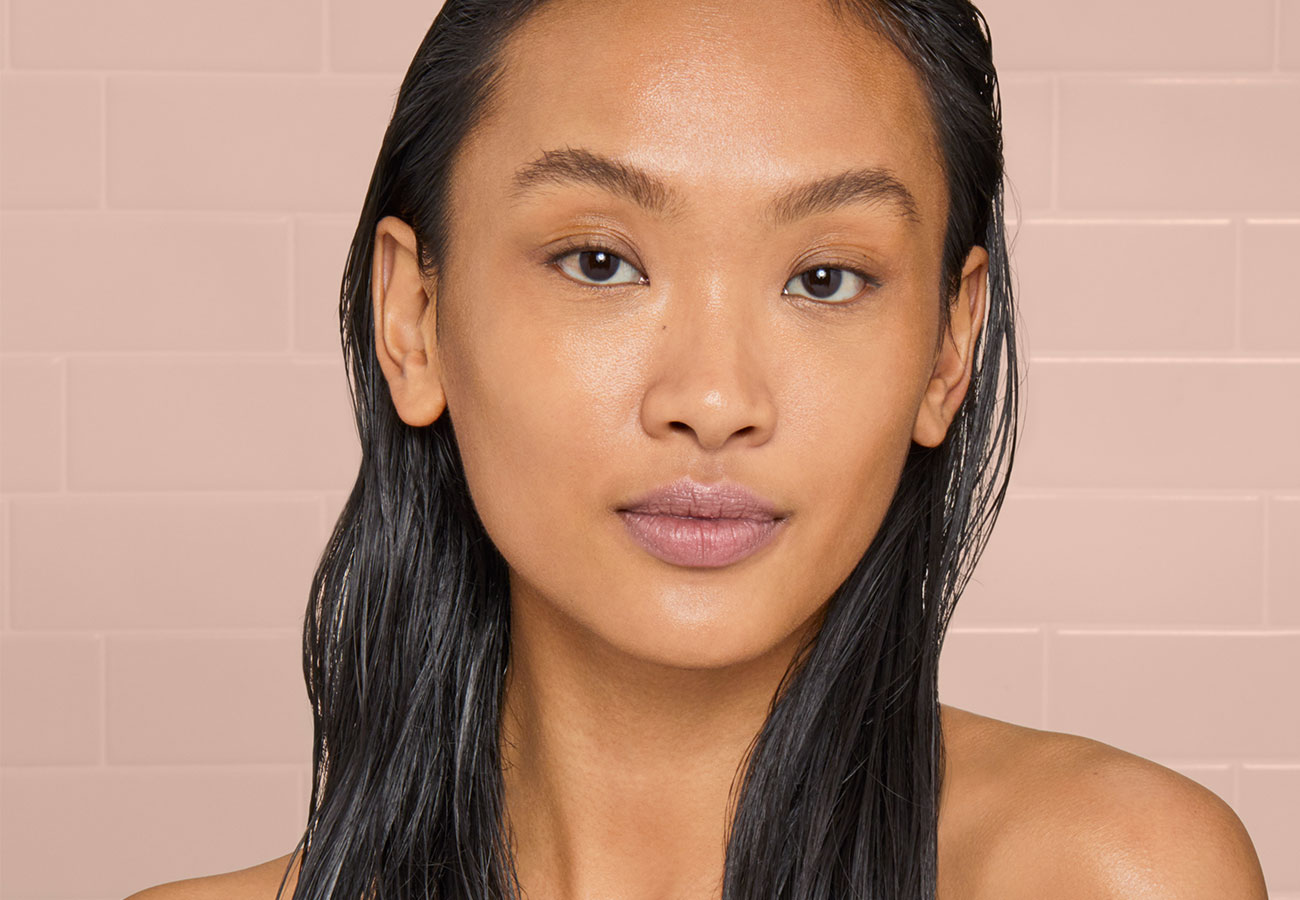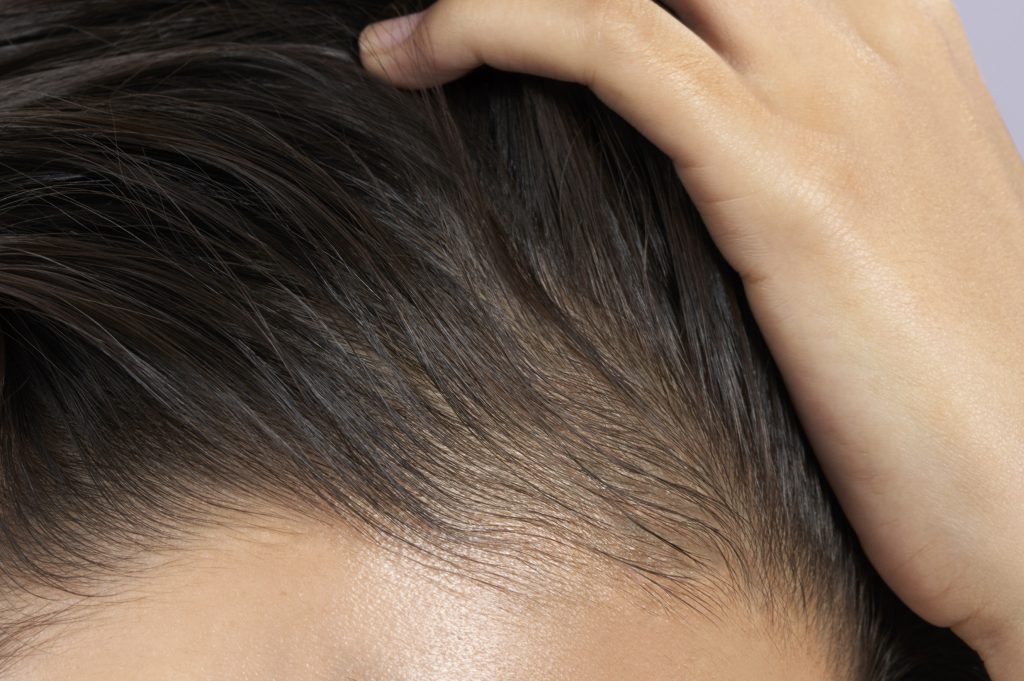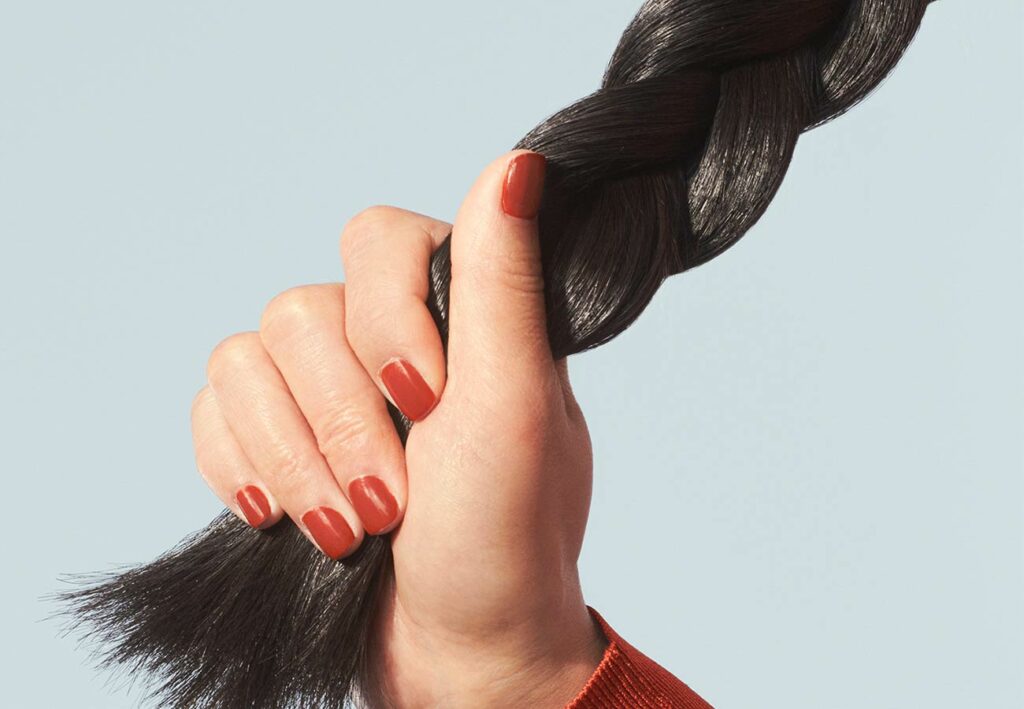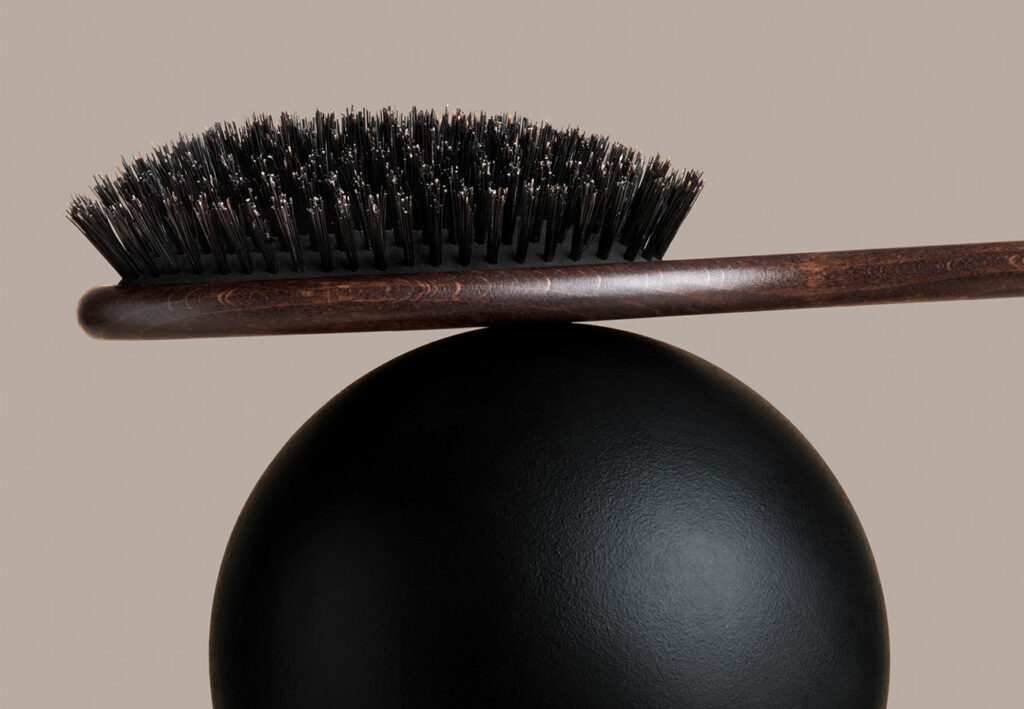Hair damage caused by chemicals
Chemical treatments include hair bleaching (also referred to as highlighting and balayage), hair dyeing, permanent waves, and curl relaxing. Bleach and hair dye can alter the hair’s physical structure, especially when bleaching and dyeing products are used incorrectly.
Overprocessed hair occurs when bleach is left on for too long, whether purposeful or not. Overprocessing can lead to breakage and dryness, while permanents and relaxers can cause chemical burns on the scalp and unbalanced pH levels in the hair.
Styling products, such as hair spray, and mousse, can lead to excessive buildup when used on a daily basis. If these styling products contain alcohol, they may also dry out the hair with extended use.
To help prevent damage, it’s important to thoroughly wash and condition your hair when using styling products to ensure all buildup is removed. You can use clarifying shampoos to clean the strands without stripping the hair of its natural oils. Clarifying shampoo should be used sparingly unless it’s specifically formulated for daily use.
Environmental factors that cause hair damage
Environmental factors most often contribute to overly dry hair. If you spend a lot of time in the sun, you may notice your hair becomes drier during the summer due to over-exposure to UV rays. Chlorine from swimming pools can also lead to dryness and breakage, and in some cases, the chemicals from chlorine can cause a greenish tint to develop on lighter hair, particularly blondes.
Excess humidity, pollution, winter static, hard water, and harsh winter temperatures are also known for causing dry, hard-to-manage hair. Fortunately, damaged hair treatment products, such as leave-in conditioners and moisturizing hair masks, work well to replenish the hair and replace lost hydration.
How to repair damaged hair
Physical hair damage
Physical hair damage occurs when heat styling tools overheat the hair, which can lead to breakage, scorching, and dryness. Brushing your hair aggressively and even using the wrong hairbrush can lead to breakage, especially when hair is already compromised from excessive heat or overuse of products.
Ponytails and braids can also lead to damaged hair if you use elastics that are too tight or leave the style in for extended periods of time. Doing so can cause stress on the edges of the hair and inadvertently affect the hairline, possibly leading to hair recession. Always chat with your stylist about the best styles for your hair type and texture.
Nutritional hair damage
In some cases, nutritional deficiencies can lead to undernourished hair follicles, which can compromise hair growth and cause thinning hair and hair loss. Hair damage due to the body’s overall nutrient intake can often be reversed by supplementing the diet with vitamins and addressing any underlying health issues that may be present.
Once the physical symptoms are taken care of, lost hair may grow back, and the hair should return to its original state. Vitamin-enriched shampoos and nourishing hair masks can also help maintain new hair growth.
Damaged hair treatment options
If you’re struggling with hair damage, such as breakage, flyaway hair, split ends, or severe dryness, a good first step is to consult with a professional hairstylist. In many cases, a hairstylist can cut away some of the damaged areas to freshen up your locks and allow for new hair growth.
In addition to a cut and style, damaged hair treatment products can work wonders on problem areas and help prevent future damage by hydrating, strengthening, and protecting your hair.
1. Hair oil
Prose custom hair oil is an ideal option to tame unwanted frizz and protect hair strands. It contains grapeseed oil to replenish your locks and shea butter to help repair damage. You can use this versatile oil before and after shampooing.
2. Hydrating shampoo
For daily protection and light yet effective hydration, Prose custom shampoo is formulated with sustainable and natural ingredients to help rebalance the scalp and strengthen each strand. Biotin aids in strengthening, while pro-vitamin B5 helps keep hair moisturized.
3. Dry shampoo
To help maintain your hair throughout the day, Prose custom dry shampoo works to soothe the scalp and extend hairstyles without harsh chemicals. Menthol refreshes the hair and scalp, and witch hazel aids in controlling sebum production.
Tips for preventing hair damage
Our hair is constantly exposed to chemicals in shampoos and styling products along with environmental elements, which can unfortunately lead to dryness, breakage and other types of hair damage. In addition to using shampoos and conditioners that protect the hair, there are also some simple preventative measures you can take to protect your hair each day. Here are some helpful tips to help keep your hair looking its best:
- Wrap your hair or use a hair spray with UV sunscreen when out in the sun
- Apply hair masks on a regular basis to nourish and strengthen hair
- Consider using silk hair ties instead of standard elastics to prevent pulling and friction
- Get your hair trimmed every six to eight weeks to remove split ends and other damage
- When possible, avoid at-home hair bleaching and dyeing kits – opt for a professional salon instead
- Use hair products that contain natural ingredients, such as Prose
For products that will help to heal and mitigate damaged hair, try Prose by taking your custom consultation here.





